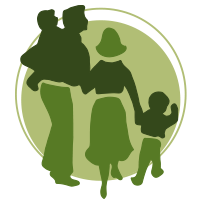The manual therapists at Luck’s Yard Clinic often advise patients that as we age, maintaining mobility and joint health becomes more crucial than ever. Stiffness, aches, and reduced flexibility can all take a toll on how we move, but the good news is—you don’t have to slow down! With the right approach, you can stay active, keep your joints healthy, and enjoy the activities you love for years to come.
Let’s dive into some essential tips that will help you keep moving as you age and protect your joint health along the way.
1. Stay Active, Stay Flexible
One of the best things you can do for your joints is to keep moving. It might sound simple, but staying active is key to maintaining flexibility, strength, and joint health. Regular movement helps lubricate your joints and supports the muscles around them.
- Gentle exercises like walking, swimming, or cycling are excellent for joint health, as they’re low-impact but still get your body moving.
- Stretching and yoga are also fantastic ways to improve flexibility, which can reduce stiffness and increase your range of motion. Just a few minutes of stretching every day can make a huge difference!
If you’re new to exercise, start slow, and gradually increase the intensity over time. Small movements each day add up to big benefits!
2. Strengthen the Muscles Around Your Joints
Strong muscles provide support to your joints, helping to absorb shock and reduce wear and tear. When your muscles are weak, your joints bear more stress, increasing the risk of pain and injury.
- Strength training is vital for maintaining joint health. Focus on exercises that strengthen the muscles around key joints, like your knees, hips, and shoulders.
- Using resistance bands or light weights in combination with exercises like squats, lunges, and leg raises can help build strength without straining your joints.
Make sure to perform strength exercises with proper form to avoid overloading your joints and causing injury.
3. Watch Your Weight
Carrying excess weight puts additional strain on your joints, particularly in areas like the knees, hips, and lower back. Even a small reduction in weight can make a significant difference in how your joints feel.
- A healthy diet rich in fruits, vegetables, whole grains, lean proteins and healthy fats can help you maintain a healthy weight and improve overall joint health.
- Staying active will also help you shed any extra pounds while strengthening the muscles around your joints.
By combining a balanced diet with regular exercise, you’ll feel better and keep your joints happier for longer.
4. Focus on Joint Mobility
Joint stiffness is a common complaint as we age, but it doesn’t have to be a permanent issue. Keeping your joints mobile is key to reducing discomfort and maintaining an active lifestyle.
- Range-of-motion exercises help to improve flexibility and prevent stiffness. Try incorporating gentle stretches that move your joints through their full range of motion—like wrist circles, shoulder rolls, and hip openers.
- Tai Chi and yoga are also great practices for improving joint mobility. The slow, controlled movements in both activities help increase blood flow to the joints and improve flexibility.
Start with basic mobility exercises and work your way up, making sure to listen to your body and adjust movements to avoid strain.
5. Use Proper Body Mechanics
How you move matters. Poor posture and improper movement patterns can put additional stress on your joints and lead to pain or injury over time.
- When lifting or bending, make sure you’re using proper body mechanics—bend your knees, not your back, and keep your weight centered.
- Be mindful of your posture, especially when sitting or standing for long periods. Use a chair with good lumbar support to avoid putting unnecessary strain on your back.
By focusing on how you move throughout the day, you can protect your joints and reduce your risk of developing joint pain.
6. Listen to Your Body
As we age, our bodies may take a bit longer to recover after exercise. It’s important to listen to your body and rest when needed. Pushing through pain or ignoring discomfort can lead to serious injuries and long-term joint issues.
- If you feel any discomfort during physical activity, it’s okay to slow down or modify the movement. Don’t push past the point of pain.
- Rest and recovery are just as important as exercise. Make sure to give your joints and muscles time to recover by getting plenty of sleep and incorporating rest days into your fitness routine.
Being mindful of your body’s signals helps prevent overuse injuries and keeps your joints in good shape.
7. Stay Hydrated
Proper hydration is essential for joint health. Your joints rely on synovial fluid to stay lubricated, and staying hydrated helps your body produce that fluid efficiently.
- Drinking plenty of water throughout the day can help keep your joints lubricated, reducing friction and improving overall joint mobility.
- For extra joint support, consider incorporating drinks or foods that are rich in omega-3 fatty acids (like oily fish, chia and flax seeds, and walnuts) or collagen (which supports the cartilage in your joints).
Proper hydration not only supports your joints but also helps with overall health and energy levels.
8. Consider Professional Help
If you’re experiencing joint pain or stiffness, don’t hesitate to seek professional help. At Lucks Yard Clinic, we offer a range of treatments designed to support joint health, reduce pain, and improve mobility. Whether it’s physiotherapy, massage therapy, or advice on exercises tailored to your specific needs, our team is here to help you move better and feel your best.
Final Thoughts
As you age, taking care of your joints is one of the best things you can do for your overall health and quality of life. With these essential tips, you can stay active, prevent stiffness, and keep your joints in tip-top shape for years to come. Remember, it’s never too late to start moving—small, consistent efforts today can pay off in big ways tomorrow!
At Lucks Yard Clinic, we’re here to support you on your journey to better joint health. Reach out to us today for more advice, or book a consultation to get personalised recommendations for your joint health.
Photo by Alexander Mass




